#What are the 5 major environmental problems
Note
A friend of mine sent me a yt video of a guy who was relocating frog eggs (prolly a vernal pool) and showed 1000s of baby frogs coming out of the water in his backyard. she asked me how I felt about it as a ecologist. I felt like it was irresponsible to do, especially to post videos on it, but probably not "ecological terrorism" like people in the comments were saying, because I see baby frogs in nature come out of water in hoards sometimes too. Kind of a mixed bag.
But I wanted to ask you, since you're a herpetologist and waaay more experienced than me: how do you feel about the yt channel "frog army YouTube"?
Many frogs and toads are classical R-strategists. Some toads can lay 20+ THOUSAND eggs in a single clutch. The whole point of that strategy is that not all of the offspring survive. In fact, it would be really rather bad if all of the offspring were to survive, because (1) they wouldn't be feeding the predators and decomposers that live off of their noble sacrifice, and (2) they will require massively more resources than they otherwise would. It can have all kinds of detrimental down-stream effects.
This is the reason we often see swarms of tadpoles darkening some small pools (especially ones where there are no fish!), and later hoards of froglets (that's the technical term) emerging from pools at once. It's an evolutionary strategy, that only few individuals survive to achieve reproductive age.
Point 1: it is *fine* if not all the tadpoles survive to adulthood. That's how the system is supposed to work. You are not doing the system favours if you are changing tadpole survivorship to 100%.
Now, humans really are fucking things up in a lot of environments. Environmental pollutants, like heavy metals, can cause major issues for wildlife, and especially frogs, which (1) are not as vagile as e.g. birds and medium- to large-sized mammals and thus cannot escape the problem zone effectively, and (2) are EXTRA sensitive to the environment because of their permeable skin.
Point 2: we do have some responsibility to do something if we notice that there is a major problem emerging, which could dramatically alter the population dynamics for one or more generations of frogs.
However, *moving* clutches of eggs that are found in polluted pools is not the right move, especially for your average person. There are many reasons that it is not the right move, but chief among them are
(1) A lot of frogs that lay eggs in vernal pools have tadpoles that cannot survive being in larger ponds, and certainly cannot survive in streams or other bodies of flowing water.
(2) A lot of frogs that lay their eggs in vernal pools are already adapted to less than ideal conditions, and have excellent strategies to overcome those conditions, such as incredibly quick metamorphosis (sometimes just a few days!)
(3) By moving clutches of eggs, you could easily be moving the pathogens or pollutants that are causing the problem in the first place.
(4) If there is Batrachochytrium dendrobatidis fungus around, you are spreading chytrid, and that is VERY bad. Chytridiomycosis has already driven several frog species to extinction, and caused massive population collapse in several others.
(5) If you do not know the species, attempts to rescue them might be aiding the advance of an invasive species.
(6) It's often illegal to intervene! Many species are protected by law, and you are not allowed to remove them from the wild. Consult your local laws.
Point 3: the responsibility to do something does not include removing the frogs and raising a frog army.
So what should we do if we find a clutch of eggs in an oily pool? Or in a nearly dried out puddle?
First assess the nature of the problem. Is the pool just about to dry out? Then leave it alone. The tadpoles will probably be fine (and if they're not, they'll provide rich nutrients to predators and decomposers). But are there signs of pollution? Then assess: is the pollution covering a larger area? Or is it localised? If you find dead frogs or other amphibians is a major warning sign, and it needs to be brought to the relevant authorities. Contact your local environmental agency/department, and notify them of the precise location of the problem, and its extent. Document everything with photos and videos.
Point 4: there are organisations and agencies specifically tasked with intervening in cases of environmental damage. It is *your* job to bring it to their attention, but unless instructed by them, you need not take any further action. It is their job to know what to do, and to take appropriate action.
TL;DR: 'Raising a frog army' is for the likes, not the frogs, and is not environmentally responsible or ethically defensible. Build a home for the frogs, and they will come.
#wall of text#long post#text post#wot#tl;dr#frogs#frog#tiktok#animals#trends#tiktok trends#info post#build a home for the frogs and they will come#I want that on a t-shirt#actually#if I answered all of the asks in my inbox as thoroughly as this#I would be writing non-stop for 393 hours
768 notes
·
View notes
Text
I feel like many people care about this but there is a lot of mis-information or one sided- information going around.
(Sources; I study environmental sciences. I have followed an course on marine litter and am currently doing my end research paper on microplastic pollution in surface water. I have used some papers for this, if you want them I can put them in the comments I think)
What I really want to put out there is that the problem is divers and that personal action and industry reform both are needed.
1. Plastic pollution is obviously a large problem. Think of the Atlantic garbage patch. But also in our own environment. More recently microplastics have been of growing concern. (there is even nanoplastics, but I am not going there)
2. When talking about plastic pollution there are many terms that are used to indicate different things.
- plastic pollution: all plastics currently in the environment that do not belong there
- marine plastic: plastic in seas and oceans
- microplastics: often classified as plastic particles under 5 mm, they are found in water, air, earth, Antarctic ice, human food and our bodies
- primary microplastics: plastic particles that enter the environment as particles under 5mm
- secondary microplastics: particles that come from larger plastics that are degraded.
With this wide variety of plastics to talk about sometimes the waters get muddies. I hear a lot of 'x is the main source of microplastics'. The simple truth is: we do not know what the main source is of most of these. But we do know what the biggest contributers are.
Plastic pollution: mostly land based sources of single use plastics. Recycling is still almost never viable or implemented. Research indicates that up to 80% of produced plastics each year ends up in the environment. That seems like a lot. ( This number probably counts landfills, which are also in the environment. stuf that goes to landfill does not magically disappear. )
Marine plastic: most marine plastic seems also to be from landbased sources. However, most of the plastic sinks. Yet, The great Pacific garbage patch is made up of almost 50% fishing gear (appearantly more buoyant?) Both of these are major problems.
Microplastics:
Primary: these come from tires, paint, washing clothes, cosmetics and other personal care products, but also the production pallets that are used to make bigger plastic products are a major source.
Secondary; these come from all the bigger plastic pollution (so land based litter for example) braking down in the environment. Currently the majority of marine microplastics seem to be secondary.
3. It is hard to measure the precise main source or sources of plastics because it is hard to monitor them. They move through the environment. The total amount of plastic amount to tons. Some sink to the sea bottoms or are currently somewhere in the atmosphere. Monitoring protocols for microplastics are still being established. So there is no absolute answer about most things right now.
4. What do we know: obviously humans are the source of plastics. Plastic need hundreds of years to break down. Most current research seems to indicate that microplastics will have negative health effects. You probably have plastic close to you right now.
Yes, we need to reform the industry large scale. Plastics should be used for the things where they are invaluable such as for medical applications and such. But we need to cut back on other uses of plastics. And we need good recycling. This one is going to be harder because of the many kinds of plastics and the limits on how many times it can be reused.
However, as an individual, you can help. I am certainly not saying everyone needs to go "zero waste." But even if you are switching out little things, you do have an impact. Further more, reducing plastics and microplastics might be healthier for you.
#microplastics my beloved topic.#i do like environmental sciences#very passionate about the plastics right now#solarpunk#i just get frustrated when information gets confusing#dont get me started on clothing made from recycled polyester#Let me know if you see mistakes.
158 notes
·
View notes
Text
Martin-Baker is a company that for more than 70 years has specialized in engineering the ejection seats utilized a majority of the world’s fighter jets. They have saved thousands of lives that in otherwise would likely have been lost. Martin-Baker revolutionized an industry that for a long time had been characterized by low survival rates, and in doing so have created an exclusive club very few are able to join, one that unifies aviators in a way that will never be taken away. I’d say only the best of the best are allowed in, but that wouldn’t be true.
A lifetime membership to the Martin-Baker Ejection Tie Club is awarded to those who have ejected from an aircraft using a Martin-Baker ejection seat, which as a result has saved their life.
These are (some of) their stories…
DAVE “BIO” BARANEK
EJECTEE #4813

For me and my pilot, 19 December 1981 was the date of a memorable excursion in a Martin-Baker ejection seat following a split-second decision to eject. I was an F-14 RIO and we were landing on an aircraft carrier in the Indian Ocean when things went wrong. I was fairly new, but I realized we were in trouble, and when my pilot said “Eject! Eject!” I pulled the lower handle. It happened in the blink of an eye, and only later could I be philosophical about it, to think about leaving the familiar and comfortable cockpit for the unknown. Thanks to the Martin-Baker MK-GRU7A seat my pilot and I survived in excellent condition and have enjoyed 38 (and counting) more years of living, flying, families, and everything else. I am thankful for the skilled US Navy technicians who maintained our equipment and the people of Martin-Baker who provided the seat that saved my life.
CDR. J. R. DAVIS
EJECTEE #4004

Martin-Baker – Thank you for the rest of my life. On 20 March 1987 my F-14A ran away with me as an unwilling passenger. Fire in the environmental control system burned through the flight controls. The airplane started un-commanded pitch oscillations and the last nose down excursion made it clear that I had to eject. My ride in F-14 BuNo 161614 ended 15 seconds before the crash with a Martin-Baker ejection seat and a parachute descent. My wife Sweet Denyse thanks you too.
CDR. TODD A PARKER
EJECTEE #4822

“It was a spring day in 1995 about 200 miles SW of Sicily. The USS Theodore Roosevelt was heading up to the Adriatic to enter the Bosnia conflict. As we expected combat, we needed to make sure as many jets as possible were up and ready so the past few days had been a maintenance blitz. We were conducting a post-maintenance check flight on our F-14 Tomcat, which the jet passed with flying colors.
After the flight we were heading back to the carrier, when suddenly the jet began bucking like a bronco – negative 2 Gs followed by 5 Gs, back and forth for about 1 minute, then it suddenly stopped. We couldn’t figure out what was wrong, but another aircraft joined up and noticed a mismatch in our horizontal stabilators. After two more events similar to the first, each time with the jet losing about 5000 feet, the jet suddenly pitched over into a negative 2 G dive and started rolling uncontrollably. I looked at the altimeter and it read 3000 feet so I pulled the handle. After the loud flash and bang, I found myself under the parachute, and looked down just in time to see the jet hit the water – what turned out to be just 4 seconds after we ejected. We were both safely under parachute, with only minor injuries but alive. We were plucked out of the water by helos from the carrier about 45 minutes later. –
Thanks to Martin-Baker and my Parachute Rigger, I am still alive, and by being able to “live to tell” about our story a major mechanical problem was found. All F-14 Tomcats were subsequently inspected and the same problem was found on dozens of other jets, so Martin-Baker not only saved my life but likely prevented many other aviators from (at best) joining the Tie Club themselves or at worst losing their lives. It was just a month later that a high school friend who heard I was deployed wrote me a letter…We’ve now been married 17 years with two wonderful children. Thank you Martin-Baker!!!
#I chose some F-14 ones cause they’re relevant#the stories go way back too#you can search through their catalogs and read hundreds of accounts from all kinds of people who flew all kinds of aircraft#they have a search bar#aviation#Martin-Baker Ejection Tie Club#have this to keep you entertained while I am flying these next two days… not far but reception will be nonexistent onboard#two seperate flights to clarify#I’m not going anywhere crazy sorry lol#top gun#top gun maverick#research#(kinda)#info#stories#text#history#I like planes#airplane history!#just a little thing i wrote#reference
16 notes
·
View notes
Text
By: Andrew Doyle
Published: Mar 5, 2024
The ideological march through the medical institutions was rapid and unexpected. In recent years, we have seen leading paediatric specialists asserting that children who say they are “in the wrong body” must have their feelings immediately affirmed. We have been told that if a boy claims to be a girl, or vice versa, they must be believed and fast-tracked onto a pathway to medicalisation: first puberty blockers, then cross-sex hormones, and in some cases irreversible surgery.
This worldwide medical scandal has disproportionately impacted gay, autistic, and gender non-conforming children. Where clinicians should have been looking out for the interests of the vulnerable, they have been encouraging them to proceed with experimental treatments. Few people would have imagined that mutilating children to ensure they better conform to gendered stereotypes would one day be considered progressive. But here we are.
Much of the responsibility must lie in the hands of WPATH (World Professional Association for Transgender Health), a US-based organisation established in 1979 that is recognised as the leading global authority in this area. WPATH has pushed for the normalisation of the “gender-affirming” approach, and its “Standards of Care” have formed the basis of policies throughout the western world, including in the NHS.
But in an explosive series of leaked files, the credibility of WPATH might now be irreparably shattered. Whistleblowers have provided author and journalist Michael Shellenberger with videos and messages from the WPATH internal chat system which suggest that the health professionals involved in recommending “gender-affirming” healthcare are aware that it is not scientifically or medically sound. A full report has been written by journalist Mia Hughes for the Environmental Progress think-tank. The title is as chilling as its contents: The WPATH Files: Pseudoscientific Surgical and Hormonal Experiments on Children, Adolescents, and Vulnerable Adults.
Some of the leaked internal messages are astonishing in their disregard for basic medical and ethical standards. For all that paediatric gender specialists have publicly stated that there is a consensus in favour of the “affirmative” model, and that this approach is safer than a psychotherapeutic alternative, their private conversations would seem to suggest otherwise.
There are messages in The WPATH Files proving that surgeons and therapists are aware that a significant proportion of young people referred to gender clinicians suffer from mental health problems. Some specialists associated with WPATH are proceeding with treatment even for those who cannot realistically consent to it. After all, how could a pre-pubescent or even adolescent child fully grasp the concepts of lifelong sterility and the loss of sexual function? As one author of the WPATH “Standards of Care” acknowledges in a leaked message:
“[It is] out of their developmental range to understand the extent to which some of these medical interventions are impacting them. They’ll say they understand, but then they’ll say something else that makes you think, oh, they didn’t really understand that they are going to have facial hair.”
Or what about the endocrinologist who admits that “we’re often explaining these sorts of things to people who haven’t even had biology in high school yet”? And these are the very patients who have been approved for potentially irreversible procedures.
Even when mental health concerns are severe – the WPATH Files include references to schizophrenia and dissociative identity disorder – patients have been allowed to “consent” to surgical procedures. Consider the following example, in which a nurse has contacted a leading member of WPATH to raise concerns about an adult patient with PTSD, major depressive disorder, observed dissociations, and schizoid typical traits. Can such a person possibly consent to treatment? According to one of the authors of WPATH’s “Standards of Care”, the answer is a resounding “yes”:
“I’m missing why you are perplexed… The mere presence of psychiatric illness should not block a person’s ability to start hormones if they have persistent gender dysphoria, capacity to consent, and the benefits of starting hormones outweigh the risks… So why the internal struggle as to ‘the right thing to do’?”
Treatments discussed in the leaked files include the removal of genitals, mastectomies, “minimal-depth vaginoplasties (vulvoplasties), phallus-preserving vaginoplasties, and nullification procedures”. A gender therapist in California speaks of intervening “on behalf of people who have been diagnosed with major depressive disorder, cPTSD, homeless, and got at least an orchiectomy” (removal of the testicles).
Those who have raised questions about such extreme procedures have been accused of “gatekeeping”. Even those who have later regretted their surgery have had their concerns trivialised. A Canadian endocrinologist acknowledges evidence from Dutch researchers of post-transitional regret, but says “it’s there, and I don’t think any of that surprises us”. The WPATH Files provide clear evidence that specialists are aware of the risks, but that they simply accept it as inevitable. One doctor is quoted as saying:
“It would be great if every patient could be perfectly cleared prior to every surgical intervention, but at the end of the day it is a risk/benefit decision.”
For some time now, it has been assumed that the “affirmative” approach is the only way to prevent patient suicides. But last July, a letter to the Wall Street Journal signed by twenty-one leading professionals involved in the care of gender-diverse youth opposed the view that this form of treatment is optimal, and pointed out that there is no secure evidence that puberty blockers reduce the risk of suicidal ideation. Last month, this was confirmed in a study published in the British Medical Journal based on a group of Finnish adolescents who were being treated for gender dysphoria between 1996 and 2019. So why have experts at WPATH taken a different view, in spite of their awareness of serious side effects and potentially fatal outcomes of the treatment they espouse?
The answer lies in one word: ideology. The new religion of gender identity is entirely faith-based, and so evidence that exposes its inherent dangers is dismissed outright by believers, even those with medical qualifications. The impact of all this is summarised by Mia Hughes in her report on the WPATH Files, in which she argues that the organisation has violated its ethical responsibilities:
“While there is a place in medicine for risky experiments, these can only be justified if there is a reliable, objective diagnosis, no other treatment options are available, and the outcome for a patient or patient group is dire. However, contrary to WPATH’s claims, the best available evidence suggests that gender medicine does not fall into this category.”
Given the fact that so many organisations have relied on WPATH’s “Standards of Care”, these revelations could be a game-changer. The ideological capture of medical institutions has resulted in reckless treatment of some of the most vulnerable in society. Patients need to understand the risks involved, and be able to make informed decisions. If nothing else, there must now be a serious reassessment of the validity of the “gender-affirming” model of healthcare.
Full details of the WPATH files can be found in the report by Mia Hughes for Environmental Progress. You can read it here.
--
#Andrew Doyle#Mia Hughes#The WPATH Files#WPATH Files#World Professional Association for Transgender Health#medical scandal#medical corruption#medical malpractice#gender lobotomy#ideological corruption#ideological capture#medical ethics#ethics violations#first do no harm#medical experimentation#puberty blockers#wrong sex hormones#cross sex hormones#gender identity ideology#gender ideology#queer theory#religion is a mental illness
9 notes
·
View notes
Text
The Best News of Last Week — May 2, 2022
🎂 - Here’s some uplifting, inspirational, feel good news stories from around the globe to start your week.
1. LeVar Burton will receive a Lifetime Achievement Award at the new children’s Emmys

LeVar Burton, the beloved former Reading Rainbow host, will receive a Lifetime Achievement Award at the inaugural Children’s and Family Emmys in December, the National Academy of Television Arts and Sciences announced this week.
Burton took on executive producer and hosting duties for the PBS kids’ program in 1983. On the show, Burton read books, conducted interviews and explained current events to children. The show aired for 23 years, and has won 12 Daytime Emmys and a Peabody Award.
2. Plastic-eating Enzyme Could Eliminate Billions of Tons of Landfill Waste
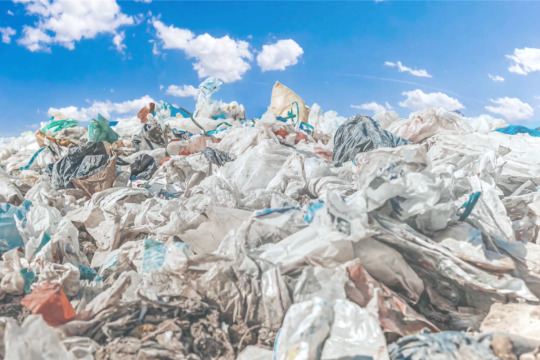
An enzyme variant created by engineers and scientists at The University of Texas at Austin can break down environment-throttling plastics that typically take centuries to degrade in just a matter of hours to days.
This discovery, published today in Nature, could help solve one of the world’s most pressing environmental problems: what to do with the billions of tons of plastic waste piling up in landfills and polluting our natural lands and water. The enzyme has the potential to supercharge recycling on a large scale that would allow major industries to reduce their environmental impact by recovering and reusing plastics at the molecular level.
3. NAU to provide tuition-free college education for Arizona residents with household incomes at or below $65,000

Northern Arizona University plans to offer free tuition to Arizona residents from households with annual incomes not exceeding $65,000 and who meet the university’s admission requirements.
The “Access2Excellence” initiative takes effect with the fall 2023 semester for first-year and transfer students who attend NAU either at the main campus in Flagstaff or NAU’s other sites elsewhere in the state, officials announced in a statement Thursday.
If you liked this post you can support me with a small kofi donation ❤️
4. Black cat known for huge eyes, wonky feet to become mayor of Hell, Michigan.

Jinx the cat to become mayor of Hell, Michigan. This little black cat will rule over Hell, located about 20 miles northwest of Ann Arbor.
Anyone can become mayor of Hell for a day. It’s part of the town’s schtick. Pets, though, are another thing. Sunday, April 24 will actually be the first time a cat will make sure all Hell doesn’t break loose.
5. US Army replaces cake it stole from Italian girl in 1945

This one’s adorable. The US Army has given a birthday cake to an Italian woman — to replace one that American soldiers stole from her as it cooled by a window 77 years ago. Meri Mion — who turns 90 on Friday — was 13 when her village of San Pietro, near Vicenza, saw fighting between US troops and German soldiers.
Her mother made her a birthday cake, but it was taken by the opportunistic — and presumably hungry — Americans. Sgt Peter Wallis, who handed over the dessert, said it was “a little awkward” to replace the stolen goods, “but it makes me feel great”.
6. EU reveals plans for the ‘largest ever ban’ on toxic chemicals

Thousands of potentially toxic or harmful chemicals still used in cosmetics, toys and even baby products could soon be banned in Europe under new regulations.
Industry groups say that up to 12,000 different chemicals present in 74 per cent of consumer or professional products could fall under these restrictions. It will be the “largest ever ban” on toxic chemicals, according to the European Environmental Bureau (EEB). “The ‘great detox’ promises to improve the safety of almost all manufactured products and rapidly lower the chemical intensity of our schools, homes and workplaces,” says Tatiana Santos, EEB chemicals policy manager.
7. Jacky Hunt-Broersma, a cancer survivor and amputee, sets world record by running 102 marathons in 102 days

On Thursday, the amputee athlete achieved her goal of running 102 marathons in as many days, setting an unofficial women’s world record.
Hunt-Broersma, 46, began her quest on Jan. 17, covering the classic 26.2-mile (42.2-kilometer) marathon distance on a loop course laid out near her home in Gilbert, Arizona, or on a treadmill indoors. Since then, it’s been “rinse and repeat” every day for the South Africa native, who lost her left leg below the knee to a rare cancer and runs on a carbon-fiber prosthesis.
- She has documented all of her runs (and more) on her Instagram! It’s @ncrunnerjacky
Also, bonus story submitted by an Irish follower: “The first ever large-scale solar farm opened here in Ireland! It’s about 25 hectares and is expected to give power to over 3,600 homes!”
. . .
That's it for this week. Until next week, You can follow me on twitter. Also, I have a newsletter :)
Subscribe here to receive a collection of wholesome news every week in your inbox :D
238 notes
·
View notes
Text




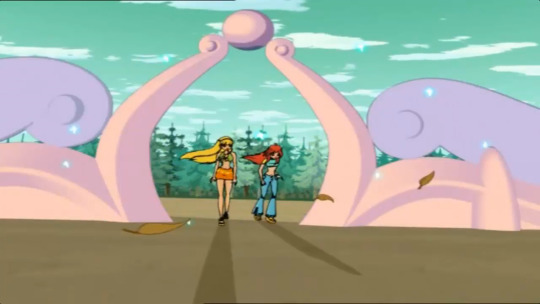
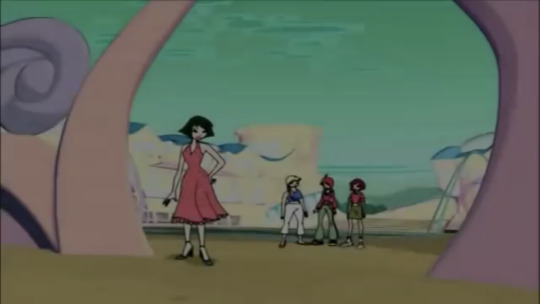
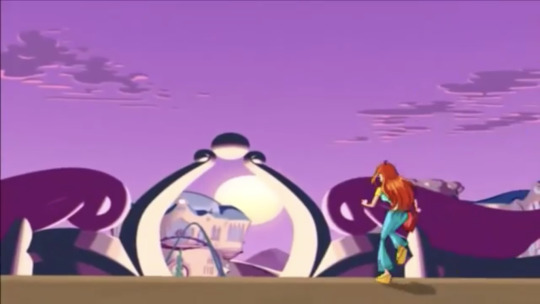

In case anyone was wondering, at all, when I said in my last post I was having some maths fails...
The problem with my brief foray into "measuring things in Stellas" back in January, is that for the most part, the exterior shots of Alfea are (or seem to be*) CG. It's done in a way that matches the visuals and vibes of the cartoon portion of the show, but as far as I'm aware, the majority of outside shots are done with characters drawn on top of the CG environment.
This leads to some... interesting discrepancies in the comparative sizes between characters and environmental objects like the main entrance to Alfea.
(* when I say 'seems to be,' there are some discrepancies like moving window placement and missing grass patches in some episodes which suggests they aren't simply doing tracking shots over a single, base model.)
Using some guesstimations to calculate the width of the double doors of the two side buildings and the area around them, I came to a width of 4.5 meters, and this matters because the central pathway of the courtyard that runs between them seems to be roughly the same width. Using that measurement an the most overhead close up I could find from my collection, I've estimated the width of the central path running from the gate to the central building to be roughly 5.62 meters.
The edge of the pathway looks like it matches up with the outer edge of the gate's arch, where the two curves (archway and wall) kiss into the dirt. (These points are marked with green dots in the top picture, and the one below.)

From there, working on the assumption that that length was 5.62 m in total, I used my line and stamp method (where I draw a line and use the paint program's stamp feature to copy the line exactly and move it and stamp it repeatedly to see how many time's one length fits against another) to figure out what fraction of the gate is gate and how much was archway.
The arch's width didn't quite measure the same as the gate's opening at ground level, but some checking of the difference revealed the arch was ¾ of the gate, and thus, the gate was ⁴∕₇ of the total width.
5.62 = ⁷∕₇ ∴ 5.62/7 = ¹∕₇ = 0.802857 = .802 meters
the arch total width ³∕₇ = 0.802 * 3 = 2.408 m ∴ 1 arch width = 2.408 / 2 = 1.204 m
the gate at ground level ⁴∕₇ = 0.802 * 4 = 3.211 m ∴ from arch to gate center (one wing at ground level) = 3.211 / 2 = 1.605 m
using the base line measures at ground level, the stamp method and the flip by 90° function, I roughly calculated the gate opening at the widest point to be just shy of 2.4 m from the center, or just shy of 4.8 meters across and sitting at about 1.86 m from the ground.
given my door based height guesstimate of Stella's height (and thereby the average height of the Winx) at roughly 1.75 m, this puts the max width just above their heads.
looking into some architecture based person dimensions to see how the various shots of people and the gate stack up, I used the average shoulder width of (405mm or) .405 m.
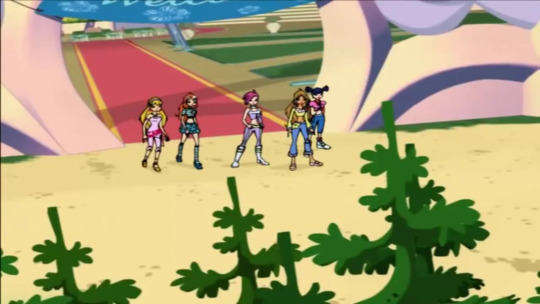
I first checked if the five girls could stand shoulder to shoulder in the gateway and found they could. Then I checked if they would have room between them, assuming half a person width on either side (between each other and the arch) for 3 more people widths.
.405 * 5 = 2.025 m
.405 * 8 = 3.24 m
Looking at this shot, the point of max width in the gate is sitting at just above their heads, right about where I'd expect given the height assumption.
This shot is therefore what I'd consider to be the most realistic in terms of person vs environment sizing.
More importantly, or equally importantly? The School busses.
Doing some digging, I discovered that the most types of busses have a width of 2.55m (thought the height can range from 2.67 to 3.81m) which means I feel pretty confidant that the Alfea school busses could clear the gate if my calculations are correct.

Along the font fence-line, on the outside stretches (as marked by the two front towers) there are two more gates, both 'one-winged' single gates. A quick measure suggests that the single gates + arches are roughly the same width as the double gates at ground level, which if the arches are the same width as the doubles and the single wings are the same as the individual wings on the main entrance:
arches = 1.2m * 2 = 2.4m total + single gate wing 1.6m = 4m at the outside of the arch at ground level
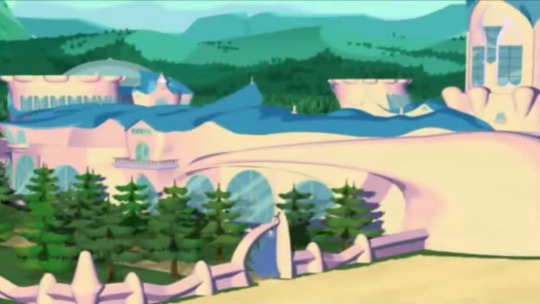

although given the lack of curve on the inside of the two archways could make them slightly slimmer, 4 m does seem to fit with the path beyond them in comparison to the central path in the courtyard.
I need you all to understand that as convoluted as calculating the gate width is, it is still less nonsensical than the windows in the Winx Dorms.
17 notes
·
View notes
Text
Apparently Ron DeSantis feels that science is "woke" and therefore needs to be suppressed.
Ron DeSantis has been accused of a “catastrophic” approach to the climate crisis after he launched his campaign for US president by saying he rejects the “politicization of the weather” and questioning whether hurricanes hitting his home state of Florida have been worsened by climate change.
DeSantis, the Republican Florida governor who announced his bid for the White House via a glitch-heavy Twitter stream on Wednesday, has previously dismissed concerns about global heating as “leftwing stuff” and he expanded upon this theme during a Fox News interview following his campaign launch.
“People tried to say when we had [Hurricane] Ian that it was because of climate change but if you look at the first 60 years from 1900 to 1960 we had more major hurricanes hit Florida than the 60 years since then,” DeSantis told his interlocutor, the former Republican congressman Trey Gowdy.
“This is something that is a fact of life in the Sunshine state. I’ve always rejected the politicization of the weather.”
DeSantis is telling Floridians, "Don't believe your lyin' eyes – or your wet feet for that matter."
Environmental groups have also taken aim at DeSantis over a record on climate they say is no better than Donald Trump’s, his rival for the Republican presidential nomination.
While governor, DeSantis has adopted bills banning Florida’s cities from adopting 100% clean energy goals and barred the state’s pension fund from making investment decisions that consider the climate crisis due to what he called a corporate attempt to “impose an ideological agendaon the American people”. He has also attacked the US military for being “woke” for warning about the national security risks posed by climate impacts.
DeSantis is a ruthlessly ambitious putz who is fixated on accumulating power at all costs.
Warm seas act like jet fuel to tropical cyclones. The temperature of the North Atlantic has unmistakably increased over the past hundred years.
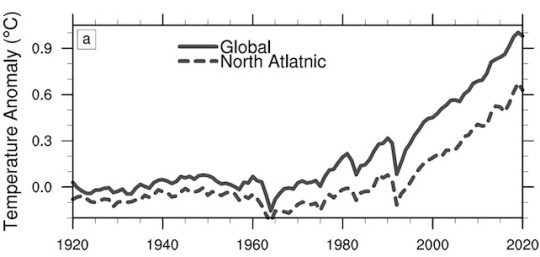
Maybe DeSantis will try to blame "woke thermometers".
The problem for Florida is not so much the number of hurricanes but the intensity of hurricanes.
Category 5 storms making landfall in the US used to be rare. But two (Hurricane Michael, Hurricane Ian) have hit Florida in just the past five years.
Maybe DeSantis cut his high school physics class to watch far right porn. So he may have missed the lesson about warmer air being able to hold larger amounts of moisture.

While wind speed gets the most media attention, it's moisture in the form of rain and storm surge which kills the most people in hurricanes.
We all remember how Trump tried to use a Sharpie to modify a map showing the path of Hurricane Dorian. DeSantis would probably burn the map and close down the National Hurricane Center for being "woke".
DeSantis as president of the US would be a danger to the planet.
#climate deniers#republicans#ron desantis#florida#hurricanes#tropical cyclones#category 5#climate change#warming seas#desantis is a desaster for the planet#election 2024
19 notes
·
View notes
Text

Find even more environmental action inspiration in our How to Help the Planet collection, with advice on organizations to support, making your wardrobe more sustainable, and more.
Image by We Are / Getty Images
View Original
From 30 Wears to 30 Years: How Long Should Our Clothes Last?
Megan DoyleHarper’s Bazaar
For years, the benchmark for buying a new purchase has been a minimum of 30 wears, but is this enough?
View Original
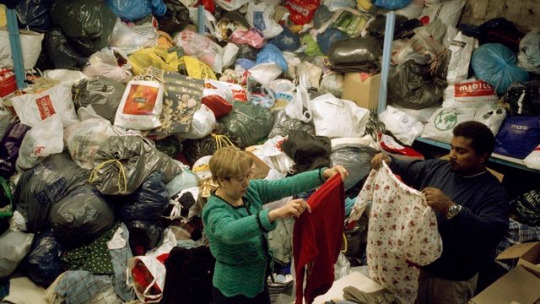
Seriously, What Are You Supposed to Do With Old Clothes?
Amanda MullThe Atlantic
There are no good solutions to the problems of closet clean-out.
View Original

Why Tailoring Is the Ultimate Sustainable Style Tip
Layla SargentGood on You
We’ve all heard the phrase, “the most sustainable garment is the one already in your wardrobe”. While that sentiment is an essential reminder to shop with longevity in mind, it can apply an element of guilt when clothes no longer fit.
View Original

Your Dirty Laundry Is the Next Big Thing in Sustainable Fashion
Inverse
Changing your washing habits can be just as important as what you buy.
View Original

Where to Sell Secondhand Clothing: A Guide
Shelby Ying HydeThe Cut
You want to consider what item you are selling and the best audience of customers for that item. It can be confusing. So we made you a list.
View Original

Aja Barber on Replacing Your Shopping Addiction With Inspiration
Yessenia FunesAtmos
“I’m not going to go shopping as a pastime anymore. I’m going to shop when I need to.”
View Original

How to Mend Your Clothes: 5 Easy Stitch Fixes
Remake
These projects can help keep your clothing wearable for longer (and out of landfills!), making them a major win no matter how far you take your designs.
View Original

The Ultimate Reseller and Consumer Guide to Thrifting Ethically
Shelby Ying HydeThe Cut
“There are a lot of pros, including supporting a circular fashion economy, affordability, and long-term environmental sustainability.”

10 Take-Action Ways to Help the Planet
Pocket Collections
Saving the planet isn’t a one-person job. But there are ways each of us can protect and preserve Earth, from planting native gardens to supporting climate action organizations—and more.
#upcycling#recycled frockery#fashion#sustainable fashion#Hello Mending#Goodbye Fast Fashion: How to Build a Sustainable and Stylish Wardrobe
21 notes
·
View notes
Note
that was truly an insanely out of pocket ask. anyway it makes me happy to hear about what makes you happy, and how your day to day is going, and what you're excited about. hope you have a good rest of your day <3
Thanks! Their apology meant a world of difference to me. The ask also lead to me reaching out directly to FIVE different long time IRL friends who had seen me in the past three days before receiving the ask. Getting a temp check with people who have known you a long time and seen you recently is definitely helpful, and although the ask made me spiral for like 2 hours, it also generated some unexpectedly affirming conversations, where people who have all known me since 2005-2008 all independent of one another basically said that they had indeed noticed that I'm more talkative and outgoing lately, but that it hadn't pinged them in any sort of concerning way. I fuck heavily with the opinion esp of 3/5 of the people in this regard because that proportion of this group had previously reached out to me in a panic worried about me because they perceived me as so sad/detached. Two of them in particular got me engaged with environmental volunteering immediately after all my 2018 bullshit where I was in super heavy PTSD territory, and I can directly credit them for a lot of connections and drives I have today. And 2 of them have also conducted mandatory wellness checks when I didn't communicate with them often enough via text for them to be comfy. And I love them for that in ways they'll never really understand.
Anyway. The general message was that nobody had been alarmed, the ask seemed out of left field to them (they don't read my blog, but they're all aware of it and tumblr-smart), and that they'd all been happy to be happy for me this year.
No ragrets. If nothing else, being able to reach out to so many friends who have been with me for so long but also so recently was validating, and that none of them were worried about me is great. I don't think I would've had any other impetus to request all those low-consequence feedback seshes had I not received the ask. None of the people pinged have anything to gain from lying to me and again, in the past, the majority have not had a problem expressing concern about my mental health.
So like. Yeah that shit threw me super hard yesterday and I immediately re-evaluated the way that I express myself here and elsewhere. I feel like I had recently re-channeled my early days of tumblr where everything was highly unfiltered, capslock and screaming in tags was quite normal, I was a small fish in a big pond, etc--because that's when it was an exciting era for me as a creator on here. I miss a lot of that energy.
And full disclosure, in my relationship before last, the one that really and truly broke my heart on top of losing Jonathan to suicide, we didn't share ANYTHING publicly. And I was so deep. And then they broke up with me horribly a month after Jonathan died and I found him!!!!!... well, how could anyone on the outside mourn a relationship they didn't know about when my RECENTLY (for my safety lol) ex-husband had just died horrifiecally? They didn't know. The scale was so weird for everyone but me. Only a handful of people even knew I was in a new relationship that i perceived as supportive and, like, a soulmate type gig. I was so sure of everything that I didn't share ANYTHING and that super fucked me over in the end.
It was awful and alienating and I wished all along that we had shared more. So I don't wanna do that shit anymore. I'm excited about shit in my life and people in my life and meeting people and finding gigs and I don't want input on that, so please treat me like the 38 year old human being I am. I have been through more bullshit than you could possibly understand, even if you read every post I ever made here, even if you were my best friend who I told everything to (doesn't exist but good concept). Assumptions are unwelcome. I'm old and I'm angry and I have energy and that's what's up. I just want people to be on board to see this middle aged piece of shit maybe like find a reason to live again and not die alone.
19 notes
·
View notes
Text
Course Outline
Foundations of Neuroscience | Month #1
Weeks 1—2 | Introduction to Neuroscience, Neurons, and Neural Signaling
terminologies | neuron, action potential, synapse, neurotransmitter
concepts | structure & function of neurons, membrane potential, neurotransmission
Questions & Objectives
→ What are the basic building blocks of the nervous system?
→ How do neurons communicate with each other?
→ What role do neurotransmitters play in neural signaling?
Weeks 3—4 | Brain Development, Neuroanatomy, & Neutral Circuits
terminologies | neurogenesis, synaptogenesis, cortex, hippocampus, basal ganglia
concepts | embryonic brain development, brain regions & their functions, neural circuits
Questions & Objectives
→ How does the brain develop from embryo to adulthood?
→ What are the major anatomical structures oft he brain, and what functions do they serve?
→ How are neural circuits formed and how do they contribute to behaviour?
Weeks 5—6 | Sensory Systems & Motor Control
terminologies | sensory receptors, somatosensory cortex, motor cortex, proprioception
concepts | sensory processing motor control, sensory-motor integration
Questions & Objectives -
> How do sensory systems detect and process environmental stimuli?
→ What neural mechanisms underlie voluntary and involuntary movement?
→ How does the brain coordinate sensory inputs with motor outputs?
Weeks 7 | Mid-terms Review and Assessment
Objective | Review key concepts, terminology, & principles covered in the first month. Assess understanding through quizzes, assignments, or exams.
Advanced Topics & Applications | Month 2.
Weeks 1—2 | Learning & Memory, Emotions, & Motivation
terminologies | hippocampus, amygdala, long-term potentiation, reward pathway
concepts | neural basis of learning & memory, emotional processing, motivation
Questions & Objectives
→ How are memories formed and stored in the brain?
→ What brain regions are involved in emotional processing, and how do they interact?
→ How does the brain regulate motivation and reward-seeking behaviour?
Weeks 3—4 | Neurological Disorders, Neuroplasticity, & Repair
terminologies | Neurodegeneration, neuroplasticity, stroke, traumatic brain injury
concepts | causes and mechanisms of neurological disorders, neural repair & regeneration
Questions & Objectives
→ What are the underlying causes of neurodegenerative diseases such as Alzheimer’s and Parkinson’s?
→ How does the brain recover from injury or disease through neuroplasticity?
→ What are the current approaches to neural repair and regeneration?
Weeks 5—6 | Cognitive Neuroscience & Consciousness
terminologies | prefrontal cortex, executive function, consciousness, neural correlates
concepts | Higher cognitive functions, consciousness & awareness, neural correlates of consciousness
Questions & Objectives
→ How does the prefrontal cortex contribute to executive functions such as decision-making and problem-solving?
→ What is consciousness, and how can it be studied from a neuroscience perspective? → What neural correlates are associated with different states of consciousness?
Weeks 7—8 | Future Directions and Ethical Considerations
terminologies | optogenetics, connectome, neuroethics, brain-computer interface
concepts | emerging technologies in neuroscience, ethical considerations in neuroscientific research
Questions & Objectives -
> What are the potential applications of optogenetics and brain-computer interfaces in neuroscience research and clinical practice?
→ How can ethical considerations be integrated into neuroscience research & technology development
→ What are the future directions and challenges in the field of neuroscience, & how can they be addressed?
Week 8 | Final Review and Assessment
Objectives | Review key concepts, terminologies, and emerging topics covered in the course. Assess understanding through a final exam or project.
Final.
#Neuroscience#course#courselearning#personal journey#intellectual#intellect#Dark Academia#intellectualism my beloved#Neuroscience.#studying#studyblog#<3
2 notes
·
View notes
Text
On today's episode of "What's Wrong With Robin?": Cyclothymia! Tune in under the cut where I explain in detail why I think Teen Titans Go Robin has cyclothymia or potentially another brand of bipolar!
(ps I'm making this as a mentally ill person with an interest in mental illnesses lol, this is going to be just as much an infodump about cyclothymia as about Robin)
Cyclothymia a subtype of bipolar disorder, involves episodes of hypomania and depressive symptoms which are not qualifiable as major depression. Note that Bipolar I does not require depressive episodes for diagnosis, and that in this situation i am using the slightly less intense diagnosis with the knowledge that because we only see the sides of Robin's life that are funny or that he shows with his friends, he might have further symptoms to elevate him to Bipolar I or II that just aren't shown on screen.
When it comes to the emotional problems that trouble Robin in daily life, he has:
- Intense emotional reactions, specifically strong irritability and intense excitement
- periods of extreme excitement in which he is unhindered by criticism, talks faster, and is often more productive in things that he enjoys and forces the other titans to be too. (This meets the criteria for a hypomanic episode.)
- if this doesn't sound like a problem to you, to quote an actual episode:
Beast boy: don't you ever get tired of being excited about everything?
Robin (excitedly): Yes I do!!! That's why I'm in therapy to lower my blood pressure!!!
- I list these as "periods of excitement" as this is not a constant state, in other situations he switches to being very irritable and angry, sometimes lonely, and often insecure. These are less intense, and he is usually still very focused on work and forcing himself to fight and be vigilant. The lack of a full major depressive episode despite some depressive symptoms and a continued lack of stability is why I ruled out Bipolar I and II right away, but one can still be depressed while being productive which frankly? I think Robin is, he is incredibly stressed and channels a lot of that into anger.
Cyclothymia can occur in any age group but typically starts during teenage years to early adulthood, a category which Robin falls under as a teenager.
Environmental factors that can contribute to developing this disorder are traumatic experiences and prolonged periods of stress, both of which Robin has experienced or is experience (the whole teen titans thing is incredibly stressful for him, not the crime fighting part the monster roommates who bully you constantly and never listen to you part. He canonically became the disaster he is as a reaction to the stress he dealt with just on his first meeting with them, and he still is with them constantly. Sorry for the titans slander, they're not that bad but that doesn't change the effect they have on Robin which is what we're focused on right now.)
In simple terms, here is which of the Wikipedia diagnostic criteria Robin falls under.
"Cyclothymia is classified in DSM-5 as a subtype of bipolar disorder. The criteria are:
1. Periods of elevated mood and depressive symptoms for at least half the time during the last two years for adults and one year for children and teenagers." ✅️, he has been experiencing this through the series, and according to raven, each new rock animal comes a year after the previous, making a ttg season a year. (Don't worry abt the fact that doesn't make continuity sense, cartoon characters don't age. like in canon they're in a cartoon.)
"2. Periods of stable moods last only two months at most." ✅️ He has never been stable for more than like, an episode or two in a row ill be honest. And considering there are 50+ episodes in a ttg year, so even if we round to exactly 50, greater than 2 months would have to be at least 9 episodes in a row of stability. This has never happened.
"3. Symptoms create significant problems in one or more areas of life." ✅️ Robin was unable to form the team he wanted because of his irritability, and is generally unable to handle being in a team because of it. His stress with his life also causes him to lash out at people and hurt criminals when they're not even doing anything. His hypomanic episodes on the other hand interrupt his ability to fight crime, as he will literally not care about potential disaster because he's just so excited and happy and would rather infodump about his interests.
"4. Symptoms do not meet the criteria for bipolar disorder, major depression, or another mental disorder." ✅️ as far as we can see, he does not have enough depressive symptoms to qualify for depression or Bipolar II, and does not experience intense or interruptive enough mania for Bipolar I. Once again though, we don't see his whole life, it is fully possible he could experience those more intense symptoms and thus suffer Bipolar I or II.
"5. Symptoms are not caused by substance use or a medical condition." ✅️ no substance use here, his behaviour is not caused by a medical condition as far as we're aware. (Once again, slightly limited by not seeing his whole life by which I mean not actually being his therapist.)
Call in now for 2 free shorter BONUS explanations of why Robin could have ADHD and why he could have Narcissistic Personality Disorder! (That's an actual offer if u wanna send an ask lol)
#ttg#teen titans go#ttg robin#robin#robin teen titans go#robin ttg#cyclothymia#mental illness#bipolar disorder
60 notes
·
View notes
Text
The Hidden Dangers of Blocked Drains What You Need to Know
The Hidden Dangers of Blocked Drains: What you ought to Find out Picture this: you are sitting within your cozy living room, enjoying a warm cup of tea on the rainy time when instantly, you hear a strange gurgling sound from the bathroom.? You rush to investigate and discover that your drains are blocked, causing the water to overflow onto your pristine tile floor.? This may seem like a minor inconvenience, but did you understand that blocked drains can in fact pose hidden dangers to your wellness, residence, and the environment? Browse on to discover the dangers you want to understand about.? 1.? Wellness Dangers: When drains are blocked, stagnant water turns into a breeding ground for bacteria, bacteria, and mildew.? These harmful microorganisms may cause various health issues, varying from light allergies and epidermis infections to even more severe respiratory problems.? Additionally, the foul odor emanating from the stagnant drinking water can trigger nausea and headaches.? It's alarming to think that something as basic as a blocked drain can jeopardize your well-being.? 2.? Structural Damage: Obstructed drains can trigger serious harm to the framework of your house.? The surplus water and pressure place undue stress on the pipes, leading to leaks, cracks, and actually burst pipes.? These issues not only result in costly maintenance but also pose a risk of flooding, harming your walls, flooring, and furniture.? Ignoring a obstructed drain may quickly switch a minor trouble into a major disaster.? 3.? Infestations Infestations: Believe it or not really, blocked drains can attract unwanted pests into your home.? Rats, cockroaches, and additional creepy crawlies are fascinated to the stagnant drinking water and food contaminants that accumulate in the drains.? These pests not only carry illnesses but may also harm your property, departing you with an even bigger issue to solve.? Don't allow a obstructed drain become an open invitation for unwelcome guests.? 4.? Environmental Impact: Blocked drains can possess a far-reaching impact on the environment.? When drains are blocked, the excess drinking water can overflow into nearby water bodies, transporting with it harmful chemicals and contaminants.? This may lead to drinking water air pollution, harming aquatic existence and disrupting ecosystems.? Additionally, the extreme use of chemical substances to clear obstructed drains can additional contaminate the drinking water and ground, creating a hazardous cycle.? Safeguarding your drains is not simply about your very own well-being, but also about preserving the planet.? 5.? Pricey Repairs: Coping with clogged drains can be a expensive affair.? Not only perform you have to keep the expenditures of repairing the underlying issue, but you may also possess to offer with the damage caused by the blockage.? Plumbers, components, and potential substitutes or fixes all arrive at a significant price.? By taking proactive measures to prevent obstructed drains, you may conserve yourself the financial burden and tension of coping with these avoidable expenses.? 6.? Tranquility of Brain: There is usually immense tranquility of brain that comes with knowing that your drains are apparent and functioning correctly.? By taking preventive actions and regular maintenance, you may avoid the stress and trouble that comes with a blocked drain.? Think about being able to unwind without the continuous get worried of a potential flood or the unpleasant odor of stagnant water.? Investing in the health of your drains means investing in your personal peace of brain.? 7.? Take Actions Now: The hazards of blocked drains are clear, but what may you perform to prevent them? One proactive measure can be to avoid pouring grease, essential oil, or food scraps down the drain.? https://plumbers-leatherhead.co.uk may accumulate and solidify, causing blockages.? Additionally, setting up drain covers can help catch hair, cleaning soap scum, and other debris before they enter the drain.? Regularly flushing your drains with hot drinking water and vinegar may also help prevent blockages by breaking down any accumulation.? Don't wait around until it's too late; take action now to safeguard yourself, your house, and the environment.? Growing on the Topic: 1.? Common Causes of Blocked Drains: Understanding the common culprits behind clogged drains may help you avoid these problems in the first place.? Issues like hair, soap scum, food waste, and small objects are often responsible for clogging drains.? By getting mindful of what will go down your drains, you may prevent blockages and preserve your plumbing program running efficiently.? 2.? Indicators of a Blockage: Spotting the signals of a blocked drain early on may conserve you from a great deal of difficulty.? Slow draining sinks or showers, gurgling noises, unpleasant odors, and water backups are all red flags that indicate a potential blockage.? By determining these indicators, you can address the issue quickly and prevent further harm.? 3.? DIY Solutions for Blocked Drains: Before contacting a professional plumber, there are a few DIY solutions you may try to apparent a blocked drain.? For example, a mixture of baking soda and vinegar can create a powerful foaming response that helps break down blockages.? You may also use a plunger or a drain snake to dislodge stubborn clogs.? However, if these methods don't function or if you're dealing with a recurring problem, it's greatest to seek professional help.? 4.? The Importance of Regular Drain Maintenance: Just like any various other factor of your home, regular maintenance is definitely essential for the health of your drains.? Frequently flushing your drains with scorching water can help prevent buildup and keep them clear.? Additionally, scheduling professional drain cleaning providers at least once a year can help remove any stubborn blockages and guarantee that your drains are in optimum condition.? 5.? Expert Help for Prolonged Blockages: If you're dealing with prolonged blockages or if you're unsure of how to handle a particular domestic plumbing issue, it's best to consult with a professional plumber.? They have the expertise, tools, and understanding to diagnose and address the problem efficiently.? Don't hesitate to seek professional help when needed, as it can save you time, money, and further tension.? 6.? The Future of Drainage: As technology advances, so will the field of drainage.? Innovations like wise drains and sensor-based systems goal to revolutionize the way we manage and prevent drainage problems.? These improvements can present real-time monitoring, early detection of blockages, and automated solutions, further reducing the risks associated with blocked drains.? Embracing these improvements may help us pave the method for a even more efficient and lasting long term.? 7.? Don't Wait, Protect Your Drains Today: Obstructed drains may still appear like a trivial concern, but the hidden dangers they pose cannot be ignored.? From health risks and structural damage to pest infestations and environmental impact, the outcomes of neglecting your drains are far-reaching.? By acquiring proactive measures, searching for professional help when needed, and embracing technology that improve drainage systems, you can protect yourself, your property, and the world.? Don't wait until it's too late; take action now and make certain the health and longevity of your drains.?
youtube



2 notes
·
View notes
Text
Customer Discovery
In quest to address issues, analysis and solutions to problems within the community. Join me as I explored and interviewed 5 people with the question: What is the problem that you often encounter in the community?
Answers, Hypotheses and Results:
Interviewee 1 & 2: No near Printing Stations
Customer’s Answer: Two students at Central Mindanao University expressed their frustration to the fact that there’s almost no near printing stations that are present around the campus.
Hypothesis: The lack of printing stations around the campus decreases the students’ productivity which means that it is really inconvenient for them. There may be a known place that provides printing services, which is the university’s market but pretty far from most of the colleges.
Method(s): Observing, Based on experience as I am also a student at CMU
Results: Upon observation, I realized that the absence of this service indeed gives difficulty for students. Many would travel and pay for a ride just to go to market or any other place, leading to delays in assignments and academic materials. Overall this negatively impacts the academic performance and overall experience of students at the university.
Interviewee 3: Improper Waste Segregation and Management
Customer’s Answer: Also, a student at CMU, highlighted the issue of improper waste segregation and management on the campus.
Hypothesis: The lack of waste segregation and management practices in the campus are causing environmental pollution and health hazards within the community.
Method(s): Audit, Assess the current waste management practices
Results: After assessment I later concluded that the university lacks proper waste segregation bins, systematic and structured waste management procedures. This led to the mixing of recyclable, biodegradable, and hazardous waste, that could lead to potential health risks for students and staff. Therefore, implementing effective waste segregation and management systems is crucial and is in need to address.
Interviewee 4: Expensive Gasoline, Increasing Various Product Costs
Customer’s Answer: A Filipino citizen expressed concerns about the rising costs of gasoline leading to the increased prices of other daily use products.
Hypothesis: The high cost of gasoline effects the prices of goods and services, resulting to community’s low buying power and unstable economy.
Method(s): Analyze historical data on gas prices and inflation rates to assess its correlation
Results: Upon further research the escalating prices of gasoline is indeed influences the adjustments of businesses to increase prices as transportation and operational expenses increases. So basically, this will affect consumer’s purchasing power and overall economic health within the country. Therefore, it is necessary to create strategies to mitigate the impact of rising fuel prices.
Interviewee 5: Weak Internet Connectivity
Customer’s Answer: Another student at CMU, sees weak internet connection as his problem within the community.
Hypothesis: Weak internet connectivity decreases the productivity of the students. Hindering academic research, fast communication, and access online resources.
Methods(s): Evaluate, Based on experience as I am also a student at CMU
Results: After testing, it confirmed that the problem is really an issue and needs urgent action. Most of the activities or assignment are commonly posted online via Google Classroom, which will make it difficult for students if the they need to turn in their responses. Majority of the teachers also post their learning materials for students online along with links like YouTube if a teacher wants his/her students to watch something, which is difficult if you have weak connection as it needs stable and strong internet connectivity.
TEAM’S OPTIONS
These options as solution to a problem are all based on the overall results from each team members.
1. Coin-operated Wi-Fi and Printing Station:
Suggested by a member. This solution could address the lack of printing stations and slow internet connection within the campus of CMU. The same concept applies to the peso Wi-Fi, but here if you connect to its Wi-Fi you’ll have 2 options, a pop-up will appear leading to a link asking if you want to print or just use the internet. Meaning you can use it for printing and internet at same time. If you choose to use only the internet, it will prompt you to insert a coin.
If you choose to print, you will be asked to provide the document or file you want to print (the user must have edited the file beforehand for direct printing), then the computer connected to the printer will automatically calculate the total price for what you want to print. Additionally, if printing is selected, payment can be made through GCASH.
If another user connects while someone else is using it, a pop-up will appear for the other user indicating that there is still someone connected. However, there is a limit of only 3 papers that can be used: A4, Long, Short (though there might be a printer that includes photo paper). This is not a typical printer it provides printing and internet service at the same time.
2. Transport App:
This option addresses the problem with the prohibition of the “habal-habal” drivers at CMU and to the fact that university is far from urban areas. This app is like Uber but more focused on motorcycles. It can deliver items to you, and you can also request them to buy something for you. For example, if you need medicine, you can book drivers through this app to inform them of your purchase, and then you can pay them for their services. The drivers for this app can be anyone as long as they are qualified, including students and teachers. It's not limited to motorcycle taxis. Before they are accepted as a driver, there is a process they have to go through. This idea was suggested by two of team.
3. Smart Waste Separator:
This solution was suggested by one of our members as solution to environmental pollution and health risks within the community. The idea is to create a machine that segregates garbage. It will have a hole where you can dispose of the trash, but inside, there are sensors that detect and segregate the waste. The collected waste will be segregated into decomposable material that can potentially be used as fertilizer or sold by the owner of the machine for their own use. The separated plastics can also be sold for recycling, allowing the owner to earn from it.
TEAM’S DECISION
After carefully considering all options, the preferred choice by all members is Option 1: Coin-operated Wi-Fi and Printing Station. This solution effectively addresses the lack of printing stations around the campus of CMU and provides a convenient way for students and faculty to access both printing and internet services in one place. It offers flexibility with its coin-operated system, allowing users to choose. Option 2 and 3 maybe useful but the team wanted something new and innovative.
LESSONS LEARNED BY THE TEAM
Through our customer discovery process and the exploration of potential solutions, our team gained valuable insights into the needs and challenges faced by our community. We learned that the lack of printing stations and slow internet connectivity within the campus significantly impacts students' productivity and academic performance. Furthermore, our team realized the importance of considering various perspectives and brainstorming creative solutions to effectively tackle complex issues. By actively engaging with members of our community, we were able to identify viable solutions that could make a positive impact.
Overall, this process has taught us the value of collaboration, innovation, and responsiveness to community needs in driving meaningful change and improving the quality of life for everyone involved.
3 notes
·
View notes
Note
Do you know the write speed of your work laptops hard drive? Because that could be part of the reason it's slower than your personal.
So I can look at write speed in task manager and it fluctuates all the time, but they look like they're fluctuating within the same range. Like it goes 0 kb/s > 70-80 kb/s > 120 - 135 kb/s > 200/300/400 kb/s > 1.4 mb/s and then repeats. Actually my personal laptop seems to hit 600-700 kb/s more often than the work laptop. You may be able to tell from this answer that this means nothing to me cause idk what write speed means LOL
Let me just list my specs lmao
Personal Laptop
Dell Inspiron 14 5410 (i'm never buying dell again i have had nothing but bad experiences in the last 3 years with multiple laptops lol)
Processor: 11th Gen Intel(R) Core(TM) i7-11370H @ 3.30GHz 3.00 GHz
Installed RAM: 16 GB
OS: Windows 11 Home (had the issue on Win 10 as well, clean installs were performed, did not fix)
Network Adapter: Intel(R) Wi-Fi 6 AX201 160MHz
Wifi protocol: Wi-Fi 5 (802.11ac)
Link speed: 58/30 Mbps
Network band and network channel: 5 GHz / 44
Work Laptop
Dell Latitude 5320 (dont let this post fool you this laptop sucks too, i know like a dozen people at work including myself who had to have our "brand new" laptops replaced within a year)
Processor: 11th Gen Intel(R) Core(TM) i7-1185G7 @ 3.00 GHz 1.80 GHz
Installed RAM: 16 GB
OS: Windows 11 Enterprise
Network Adapter: Intel(R) Wi-Fi 6 AX201 160MHz
Wifi protocol: Wi-Fi 5 (802.11ac)
Link speed: 1560/1560 mbps (this is the only major difference I can see between the two of them? why is it so much higher?)
Network band and network channel: 5 GHz / 44
It also has a much higher signlat strength in general when I look at it.
---
help a girlie out i did environmental science not IT and i've been barely able to play games or be in discord calls for like two years now and it's painful 😭😭😭😭
A note: I do not have an ethernet connection and currently no way to put one in. I understand that wireless connections are inherently slower but it should be THIS slow if our internet package has up to 300 mbps (iirc)? I am in a room far from the router, but as aforementioned, it's pretty slow even by the router and I would assume all devices would struggle if it was Only the distance that was the problem. I had multiple Dell support people stumped with this laptop before and the wifi card was replaced once already.
#i lowkey felt like i tried everything a year or two ago and it didnt help so i just tried to live with it#and sometimes it's...fine? like i can watch youtube and stuff and be ok#and people will mostly be able to hear me in discord#but OMG it has sucked so bad these past two weeks#i may just get a new one because i've now suffered with this thing for 2.5 years so now i feel less bad about buynig a new one#when i hated it 6 months in i felt like i needed to keep it to get my money's worth but now i'm like well. i kept it for a While.#maybe i've just done my time#BUT WHAT IF I GET A NEW ONE AND IT'S ALSO BAD? cries
2 notes
·
View notes
Note
Hold up, you were in some kind of environmental science/studies? Am I hearing this correctly? This is a field I've considered if I ever go back to college so I guess I'm just curious to hear about your experience of it.
Yes, that's it! I studied a bachelor of environmental science with honours (though my honours project was in water sensitive urban design and socio-hydrology, so branching out a bit). I technically majored in environmental toxicology (and they scrapped majors the year after my cohort, so it's quite possible I'm the last ever person to graduate with my exact degree) but I did stuff all across the board also including sustainability of all kinds, environmental management and its required social science and demographics, ecology, conservation, a bit of earth science, a bit of resource management and for some reason the toxicology required a bit of medicinal chemistry and biology. Also, there was a small bit of soil science/agriculture related stuff thrown in there too (ya know, everything is relevant to enviro sci). My area of passion is applying all of this to urban design and regional and community planning to essentially optimise human existence from an environmental lens! And I know some basic climate science due to my degree (fun fact, it's what everyone asks about, but i actually hate it, the mechanism for climate change is actually very obvious, and it was probably only 1% of my entire degree and covered within the first week).
So yeah ask me literally anything about it! (Even if you did ask me about climate change I will not complain, I can probably explain it in less than 5 minutes by now). Overall verdict: emotionally scarring while you're doing it, but actually very very empowering in the end. If you do it, don't forget to draw the parallels between taking care of the planet and taking care of your brain, because we need both. And sometimes learning the hard truths is necessary, but that means it's also worth it to have appropriate supports in place, accommodations, and permission to take it in your own time especially as it's hardest emotionally I think (don't get me wrong, it's brutal academically too). Having said that, I now have very little eco-anxiety compared to a lot of my peers because I actually know the answers to many problems--including the one about people being the barrier to the kind of transformative change we need (this can be studied using social science, and is actually easier to address than we realise). So overall, 10/10 but treat it like you're climbing everest in stilettos rather than a walk in the park, adjust your expectations accordingly, and you will thrive! then we can save the world together
6 notes
·
View notes
Video
youtube
Diabetes--What You Need to Know About This Hidden Danger
Diabetes is a disease in which blood glucose levels are above normal. Most of the food we eat is turned into glucose (sugar) for our bodies to burn to create energy. The pancreas, an organ that lies near the stomach, produces a hormone called insulin to help click here to learn more glucose get into the cells of our bodies. When you have diabetes, your body either doesn't make enough insulin or can't use its own insulin as well as it should. This causes large amounts of sugar to build up in your blood.
The actual cause of diabetes continues to be a mystery, although both genetics and environmental factors such as obesity appear to play major roles. Diabetes can cause serious health complications including heart disease, blindness, kidney failure, and lower-extremity amputations. According to the Center for Disease Control, diabetes is the sixth leading cause of death in the United States. As of 2002, 18.2 million people in the U.S.--6.3 percent of the population--had diabetes, with 1.3 million new cases being diagnosed each year. The National Institutes of Health also estimate that an additional 5.2 million people have diabetes without actually being aware of it.
There are two main types of diabetes. Type 1 diabetes, which was previously called insulin-dependent diabetes or juvenile-onset diabetes, accounts for about 10% of all diagnosed cases of diabetes. Type 2 diabetes, which was called non-insulin-dependent or adult-onset diabetes, accounts for the remaining 90%. Gestational diabetes is a type of diabetes that only pregnant women get. If not treated, it can cause problems for both the baby and the mother. Gestational diabetes develops in 2% to 5% of all pregnancies, but usually disappears when the pregnancy is over.
Diabetes is a serious disease and phrases such as "a touch of diabetes" or "your blood sugar is a little high" tend to dismiss the fact that diabetes is a major killer of Americans. In addition to the lives that are lost, diabetes has a tremendous economic impact in the United States. The National Diabetes Education Program estimates the cost of diabetes in 2002 was $132 billion. Of this amount, $92 billion was due to direct medical costs and $40 billion due to indirect costs such as lost workdays, restricted activity, and disability due to diabetes. The average medical expenditure for a person with diabetes was $13,243, or 5.2 times greater than the cost for a person without diabetes. In addition, 11 percent of national health care expenditures went to diabetes care.
2 notes
·
View notes